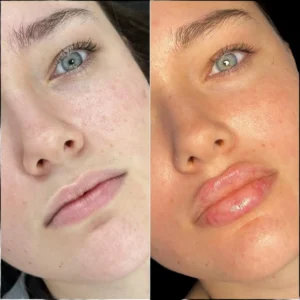In recent years, the wellness and beauty industries have seen a surge in unconventional methods claiming to accelerate weight loss and improve overall health. Among these, a relatively new trend has emerged that promises quick and effortless slimming results: the use of intravenous treatments aimed at burning fat and boosting metabolism. Known colloquially in some circles as slimming drips, these intravenous cocktails combine vitamins, minerals, and other compounds directly administered into the bloodstream, purportedly to jumpstart the body’s fat-burning processes. But the critical question remains—are these slimming drips a legitimate breakthrough in weight management or simply a placebo riding on the wave of hype?
Understanding What Slimming Drips Are
Slimming drips typically involve a blend of substances such as vitamin B complex, magnesium, amino acids, and sometimes fat-burning compounds like L-carnitine or lipotropic agents. Administered intravenously, these cocktails bypass the digestive system to deliver nutrients directly into the bloodstream, which proponents argue leads to faster and more efficient absorption. Clinics and wellness centers often market these treatments as a quick fix for weight loss, offering an appealing alternative to traditional dieting and exercise routines that require time, effort, and consistency.
The underlying theory is that these nutrients help boost metabolism, increase energy levels, reduce appetite, and enhance fat breakdown. Many clients report feeling rejuvenated immediately after the treatment, with claims of accelerated weight loss over a short period. However, it’s important to scrutinize these claims carefully and consider what science has to say about their actual efficacy.
The Science Behind Intravenous Nutrient Therapy
While intravenous nutrient therapy is a well-established practice in medical settings for treating deficiencies and certain health conditions, its role in weight loss remains controversial. Scientific evidence supporting the idea that direct infusion of vitamins and minerals can lead to significant fat loss is scarce. Most of the compounds found in slimming drips, such as B vitamins and magnesium, are essential for maintaining bodily functions but do not have a proven ability to directly cause weight loss.
For instance, B vitamins are crucial for energy metabolism, but supplementing them beyond adequate levels in healthy individuals typically does not boost metabolic rate significantly. Similarly, amino acids and lipotropic agents may support liver function and fat metabolism, but their effects when given intravenously in short bursts are not conclusively linked to sustained weight reduction.
Moreover, weight loss fundamentally requires a calorie deficit—burning more calories than consumed—which no nutrient infusion alone can guarantee. Without changes to diet and physical activity, relying solely on slimming drips is unlikely to produce lasting results.
The Placebo Effect and Psychological Impact
One undeniable factor contributing to the popularity of slimming drips is the placebo effect. The ritual of receiving an IV drip, combined with the professional and somewhat clinical atmosphere of wellness clinics, can enhance a person’s belief in the treatment’s effectiveness. This psychological boost can lead to temporary changes in behavior, such as increased motivation to eat healthily or exercise, which in turn might lead to some weight loss.
Feeling energized or refreshed after the treatment may also improve mood and reduce stress, both of which are beneficial for overall health and can indirectly influence weight management. However, these effects are more related to improved well-being rather than a direct physiological impact on fat loss.
Safety Considerations and Potential Risks
Despite the allure of quick results, slimming drips are not without risks. Intravenous treatments should always be administered by trained medical professionals to avoid complications such as infections, vein irritation, or allergic reactions. Additionally, unnecessary infusions of vitamins and minerals can sometimes lead to imbalances or toxicity, especially if done frequently or without proper medical supervision.
Consumers should approach slimming drips cautiously, questioning the credentials of providers and seeking clear information about the ingredients used. The lack of standardized formulations and regulatory oversight in many places further complicates the safety profile of these treatments.
Weighing the Promise Against Reality
The slim chance that slimming drips alone can replace healthy lifestyle changes means that they should be viewed as a complementary aid rather than a magic bullet. For individuals struggling with weight loss, sustainable results come from balanced nutrition, regular physical activity, and behavioral adjustments. While the promise of an easy fix is tempting, relying solely on intravenous treatments can lead to disappointment and wasted resources.
Nonetheless, some people might find value in slimming drips as part of a broader wellness regimen, particularly if the treatments help them feel more energetic and motivated to pursue healthier habits. In such cases, the combination of psychological benefits and medical support can potentially enhance the overall weight management journey.
Conclusion: A Balanced Perspective
The phenomenon of slimming drips reflects the broader cultural desire for fast, effortless solutions to complex health challenges. While the idea of losing weight through a quick vitamin infusion is appealing, current scientific evidence does not support slimming drips as a reliable or standalone method for effective weight loss. Instead, they should be approached with cautious optimism and an understanding of their limitations.
For those considering slimming drips, the best approach is to view them as a supplementary treatment within a comprehensive lifestyle strategy, not as a substitute for diet and exercise. Consulting with healthcare professionals and maintaining realistic expectations will help individuals avoid the pitfalls of false promises and focus on sustainable health improvements.






